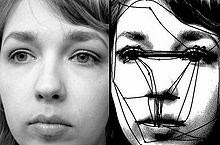After Simone's lecture on Friday, it became apparent that I hadn't really done enough mind-mapping to my own satisfaction, so I made several about different topics I was considering exploring; motion graphics, attention spans, and a "jellyfish" mind map about all the areas I had thought of.
Above: attention spans
- High-intensity stimulus vs simpler, streamlined
- What stimulus does the eye/brain latch onto? In what order?
- Emotional stimuli
- Designing for low attention spans?
- Autism and ADD learning structures
- Creativity and Cognition studies website
- listed articles of use
Ideas from this mind map
- Further user experience/investment with interactive art piece - appears static, but as the user clicks or touches more animation or art revealed (think "Strawberry Thief" game by Sophia George)
- Design for learning or educational
- Possible combination of the above
- Kinetic learning styles - how and why
Above: motion graphics
- Kinetic information
- Attention span & visuals
- How does the golden spiral relate to motion design?
- Saccadic eye movements
- Design motion information to correspond with eye movements
- Isometric
- Papercraft/traditonal art simulated digitally
- Static pieces made interactive with touch/click
- 2D? 3D? Combination?
- Create a motion animation from a static piece of art?
Ideas from this mind map
- Watch tutorials and learn!
- Overlay static, possibly traditional medium pieces with 3D motion animations
Above: Jelly fish mind map
Here I wrote down ideas as they came to mind, and ones which followed from those. Ideas which could be linked were circled in the same pattern. Here I found the ideas concerning transmedia narratives quite helpful to the ideas process, as this got me thinking about why transmedia narratives are effective and what kind of project would typically use them. The "art for emotion" ideas also got me thinking about illustration as a tool for emotion. These two things then helped lead me to the topic of art informing social behaviour, which is the mind-map below.
This topic I think would work best as a dissertation topic as there is potential for a lot of psychological research and case studies into propaganda and branding.
- What kind of design has the most influence?
- Why was it designed? Reaction to the times
- Political art movements (propaganda)
- Multiple ways to be absorbed my someone
- Transmedia
- What is the most effective end user experience?
- QR codes integrated into art
- Immersive or interactive art
- Branding and persuasion
- Personal interest = greater emotional involvement?
- What is it about the narrative that makes people want to continue?
This led to the question of how to choose an honours project topic that would link to the above topic if that were to be my dissertation topic. After a lot of muddled brain-stewing, a chance finding of a book about graphic design exercises which involved designing for brands gave me a lightbulb moment. Arguably all design involves psychology and an attempt to influence someone, however branding is an area where this is particularly true as it is more often than not tied up in the process of buying and selling goods or a service. Some of my favourite honours projects from previous years have been ones on branding, and it is an area which can include graphic design, motion graphics and illustration which are the three key areas I would like to be the most proficient in.
Above: branding
- How far does a brand have to go?
- Transmedia as an effective medium
- Propaganda and branding
- Lifestyle brands: Life Is Good, Lulu Lemon, Hollister, Lush, Abandon Ship, Genius Foods (case studies)
- What is the end user experience of the brand/message's impact? What experience are consumers being promised?
- Propaganda designs aimed at consumers; WWII posters
- What parts of a person do brands try to call out? How do we convince someone they "need" a product?
Next steps: Reading up on books/articles relating to branding and emotional design, case studies on what and why brands are successful from a visual point of view.






